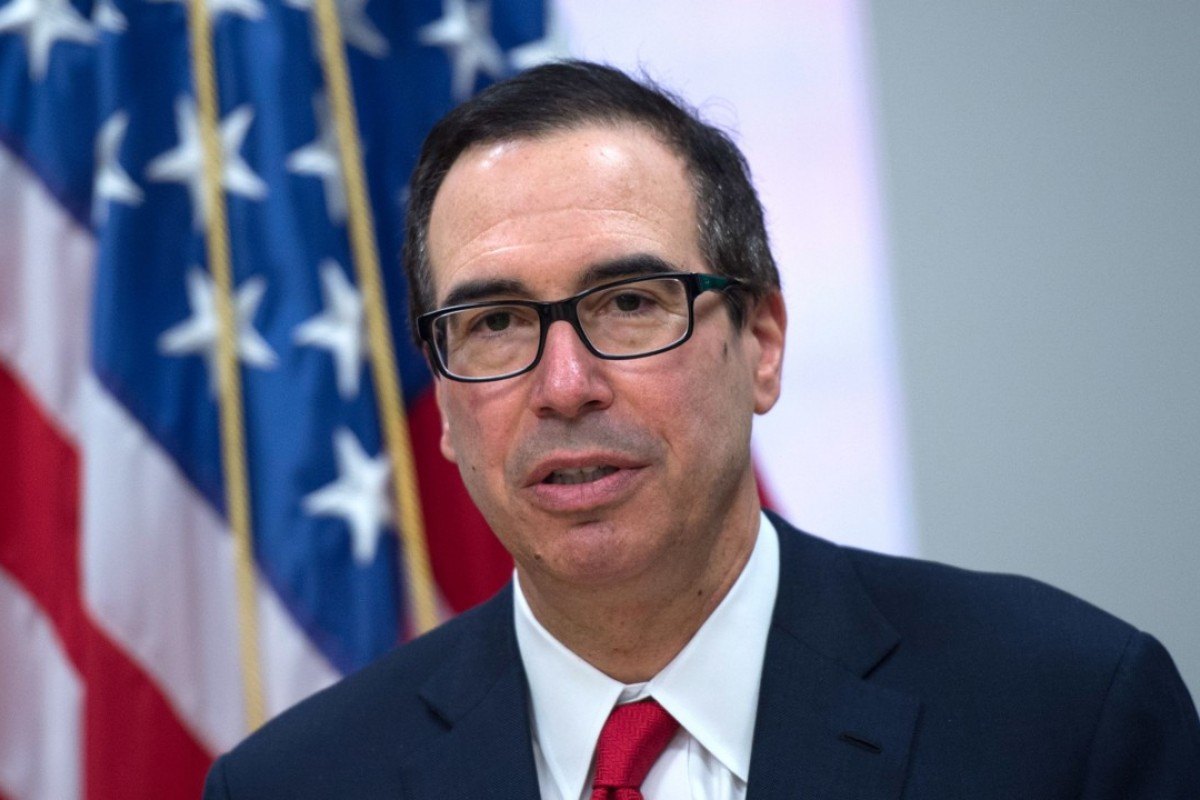Is Mainstream Dominance A Must for Cryptocurrency?

2019 is coming to a close. And surprisingly, it’s not the crypto bull market, as envisioned by certain experts, that is fueling the crypto discussion. Although crypto has had a more successful year than it did in 2018, there are, however, reasons to believe that the crypto narrative is still revolving around the lack of mainstream attention.

For one, regulators in the US are not showing any sign of bulging to the crypto community’s push for a crypto ETF. Also, China has recently reinstated its stance on cryptocurrency, which had devastating effects on the prices of cryptocurrencies. More saddening is the fact that entities are doubling their efforts to dictate proceedings, either via introducing centralized cryptocurrencies or setting up regulatory debacles that would stifle growth.
One could argue that the mainstream adoption train had since slowed down. Pundits who had once projected crypto’s global dominance have begun to question the current state of crypto and blockchain technology. On December 10, Coindesk published an article that followed this trope and declared the improbability of crypto mainstream adoption. In this article, Jill Carson, co-founder of Open Money Initiative, aired her opinion about crypto’s stalling global acceptance. And she concluded that mainstream adoption was never the right metric to judge crypto’s performance.

Carson stated:
“As an industry, we spend a lot of time considering how to drive mainstream adoption of cryptocurrency. I, for one, do not want to live in a world where cryptocurrency has found mainstream use. For if it has, that world is a very scary place indeed.”
While this view might seem intrusive to crypto protagonists, there is, nonetheless, some merit in Carson’s argument. For one, many of the censorship-resistant technologies available today have found it difficult to attain mainstream status. This assertion holds for the Tor browser, which avails restriction evasive tools for users looking to access censored contents on the internet. Then there is Bittorrent, which facilitates unrestricted file-sharing services.
You will agree that regardless of the importance of both tools to internet users in today’s increasingly regulated online ecosystem, their customer bases still do not come close to those of their centralized competitors. Judging by the inability of these censorship-resistant tools to attain global status, it is safe to say that people still gravitate towards the glossy, flawed, and popular centralized systems. Relating this analogy to the apparent lack of mainstream interest in decentralized cryptocurrencies speaks volumes of the disparity between where the crypto space is today and where enthusiasts believe it is heading.
Maybe Carson was right after all: Crypto was not designed to alter the financial status quo. Maybe Satoshi Nakamoto, Bitcoin’s inventor, never pictured a world where Bitcoin emerged as the de facto currency in the global market. Or just maybe this innovation will only play second fiddle to centralized currencies, be it digital or fiat.

Some of Carson’s arguments centered around the inability of cryptocurrency to offer superior solutions to the perceived frailties of the financial industry. She explained:
“By design, cryptocurrency does not solve mainstream problems. Scale, speed, and cost are all examples of mainstream problems within finance, from the main street to Wall Street. Credit card networks go down. Stock trades take days to clear. Wire transfers are expensive. In some situations, cryptocurrencies may offer marginal improvements on any of these issues, but more often blockchain-based systems will fail when compared to more conventional, centralized solutions.”
In as much as cryptocurrency and blockchain offer just marginal improvements to the problems ravaging conventional solutions, it is, therefore, impossible to put to rest arguments that question the viability of digitals assets. We see this manifest in the incessant occurrence of scalability-related setbacks of blockchain payment networks.
It is no more news that the inability of a blockchain to scale indirectly increases the fees charged on each transaction and negatively affects the speed of crypto networks. Moreover, it is safe to say that these factors contributed to the dwindling buzz of blockchain in 2019. In 2018, enterprises invested heavily in blockchain technology, but they are now coming to terms with the fact that it might take some time for the technology to reach its potential.
Then there is the threat that decentralization poses to traditional industries or economies. Crypto offers users an escape from tightly monitored and influenced financial infrastructures. As a result, Bitcoin is more popular in regions with monetary policies, which encourage the government to tighten its grip around the country’s financial systems. Also, there is an apparent increase in the volume of crypto activities recorded in countries that are reeling from the full effect of a financial crisis resulting from sanctions or poor economic policies.
People who have turned to crypto, because of one of the two case studies mentioned above, are perhaps the major beneficiary of Satoshi’s promised financial freedom. These sets of people have joined the crypto space out of the burning necessity to survive an inconvenient situation. On the other hand, participants located in thriving economies might never come to see crypto for what it is. They joined the crypto bandwagon out of curiosity or because they want to diversify their portfolios.

And so, they would likely relegate the core functionalities of crypto while focusing on price trends. And when prices fall and crypto becomes somewhat unfashionable, they will scramble back to their safe havens (that is centralized financial systems). This notion – depicting the direness of crypto payment facilities in some regions and the less pronounced utilization of these functionalities in other countries – shows why financial experts, like Jill Carson, believe that the mainstream narrative is being forced.
In other words, it is difficult for Bitcoin to maintain the same level of potency as a viable alternative to fiat currencies across the global market. It is difficult to make a case for Bitcoin’s payment network to citizens of an established and financially stable nation. From what we have learned so far, not many would ditch a system that works for an unproven one.
Nonetheless, there is growing optimism that crypto, as well as blockchain technology, would eclipse the frailties that have questioned its capacity to cater to a global market. This assertion stems from developers’ newly found zeal to eliminate the drawbacks of both technologies. As such, crypto networks are looking to deploy various cost-reducing and scaling innovations. By so doing, the marginal improvements that Carson mentioned will become glaring enough to suggest that crypto payment systems provide superior services to what centralized entities offer.

And when this happens, I, for one, believe that people living in developed nations would have one more reason to utilize crypto. While this is a given, it remains to be seen if improved payment features will contribute to the mainstream adoption narrative, knowing fully well that central authorities won’t sit around and accept such possibilities.
For what it is worth, the powers that be are not thrilled with Bitcoin’s surge to the global market. It questions their sovereignty, and these authorities would do whatever it takes to halt the crypto mainstream movement or alter the narrative to a more favorable one.
Crypto and Illegal Activities
Regulators in countries that have enacted strict laws against cryptocurrency often base their stance on digital assets’ affinity for illegal activities. Owing to the borderless payment capacity of crypto, people can completely bypass central authorities. Right from its earlier days, cryptocurrencies had earned a reputation as the de facto currency in the dark web. Also, the emergence of privacy-enabled cryptocurrencies further propelled an intensified scrutiny of the workings of the crypto space.
That said, it’s a bit of a stretch to believe that crypto propelled illegal activities like money laundering and terrorism. Long before the ascendance of crypto, illegal entities have carried out their businesses effortlessly, even without using a technology that limits the sovereignty of central authorities.
Throughout history, individuals or enterprises have always found a way around measures taken by governments to eliminate illegal transactions. Therefore, it is ridiculous to nail the increase in illegal activities on the proliferation of digitals assets.
Seeing that 2019 birthed several crypto regulatory frameworks targeted at ensuring compliance with anti-money laundering practices, it is somewhat certain that regulators are pushing for better surveillance of the crypto space.

A recent quote from Steven Mnuchin, secretary of the U.S. Treasury reminded us of the growing importance of regulatory compliance. In a statement directed towards the legal uncertainties, stifling the development of Libra coin, Mnuchin stated that he had no problem with the digitals asset as long as it is fully compliant with regulatory requirements and not in any way used as a tool to fund terrorism.
Furthermore, the fact that crypto seems not to have answers to the plethora of security issues plaguing its efficacy is not helping matters. Earlier this month, the Verticoin blockchain fell victim to a 51% attack for the second time in a year. During this attack, 603 legitimate blocks on Verticoin’s blockchain was replaced with 553 blocks, which allowed the attacker to double spend.
This incident showcased the security risks that could undermine the safety of cryptocurrency users. One could argue that attacking an established blockchain like Bitcoin would require unprecedented computing power and resources on the part of the attacker. However, the advent of innovations, like Google’s quantum computer, projects a dicey future for cryptocurrency. Nevertheless, it is plausible that developers are going to come up with the right response to such security threats.
Another security hole that crypto has found it difficult to plug is the unrelenting cases of scams and thefts barraging the mainstream movement. There is no doubt that nefarious individuals are taking advantage of the speculative nature of the crypto market to create and market pump and dump schemes. On December 10, Bloomberg reported one of the latest and biggest crypto fraud news of 2019, as US prosecutors charged three individuals involved in a $722 million “high-tech Ponzi scheme.” The details of the report revealed that the scheme, called BitClub Network, had been in operation since 2014. The team behind this Ponzi scheme encouraged investors to acquire shares of a purported crypto mining pool and recruit new investors for the chance of earning rewards.

Another report on Cointelegraph documented how another fraudulent crypto firm, based in Uganda, fled after convincing its employees and investors to pour money into a Ponzi scheme. While one of the directors has allegedly been nabbed by the local police, it is not, however, clear if the defrauded investors would recoup lost funds. A spokesman for Kampala Metropolitan Police stated that the investigation is still ongoing as regards the possibility of refunding duped investors.
What Are the Odds That Cryptocurrency Will Attain Mainstream Acceptance?
Regardless of all the factors antagonizing Bitcoin and crypto’s relevance in the global scheme of things, it is somewhat risky to bet against the odds that digital assets would eventually overhaul the current monetary infrastructure. This notion is a sentiment that Jim Reid, a Deutsche Bank strategist, shared when he stipulated in a recent report that crypto would eventually replace fiat currencies in the year 2030. Jim Reid explained:

“The forces that have held the current fiat system together now look fragile and they could unravel in the 2020s… If so, that will start to lead to a backlash against fiat money and demand for alternative currencies, such as gold or crypto could soar. The demand for alternative currencies will therefore likely be significantly higher by the time 2030 rolls around.”
Reid believes that central banks and corporate-backed cryptocurrencies would fuel this upheaval, which supports the assertion that central authorities will mold the crypto mainstream narrative in their favor.
Final Thoughts
Judging by the point raised in this article, it is clear that crypto must bypass a lot of roadblocks before it can attain the mainstream status that supporters and critics have long held as the metric to score its performance. However, is mainstream dominance the right way to rate crypto’s efficacy?
There are reasons to question the critical perception of the media regarding crypto’s global stance and its implications. Nonetheless, crypto’s mainstream movement has kept participants on their toes, which bodes well for the technology.
